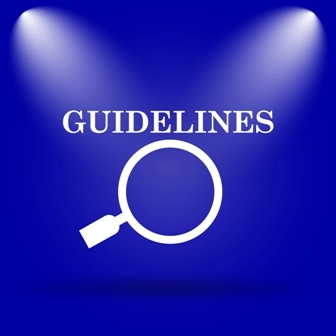
Watch out for these changes to ICD-10's general coding guidelines for FY 2018.
Looking to fine-tune your diagnosis coding and your systems as you prepare for the ICD-10 code changes that take effect October 1, 2017? Pay close attention to the little words in the coding guidelines and how they'll be changing as we start a new year of ICD-10 coding.
Reminder: The diagnosis coder's ultimate guide to the little words that make big differences is the ICD-10-CM Official Guidelines for Coding and Reporting, which is revised annually. The document begins with 19 ICD-10 coding "conventions," several of which instruct coders how to interpret words like "and" (14) and "with" (15). It continues with general coding guidelines, and then guidelines for each chapter of ICD-10.
Look Out for These FY 2018 Guidelines Changes.
Among the changes to the guidelines that take effect on October 1, 2017 are:
Changes to Convention 15, "With": In ICD-10-speak, "with" can be interpreted to mean "associated with" or "due to," the guidelines note. The FY 2018 revisions add "in" as another option besides "with." Both "in" and "with" express "a casual relationship between the two conditions" they connect, the guidelines state. More explicit instructions follow, with FY 2018 additions in bold:
"These conditions should be coded as related even in the absence of provider documentation explicitly linking them, unless the documentation clearly states the conditions are unrelated or when another guideline exists that specifically requires a documented linkage between two conditions (e.g., sepsis guideline for "acute organ dysfunction that is not clearly associated with the sepsis").
For conditions not specifically linked by these relational terms in the classification or when a guideline requires that a linkage between two conditions be explicitly documented, provider documentation must link the conditions in order to code them as related."
Changes to Convention 17, 'Code also' note: A "code also" note signals that you may need two ICD-10 codes to fully describe the condition, but it doesn't tell you how to sequence them. (In contrast, a "code first" note provides explicit instructions about sequencing.) The FY 2018 guidelines add this sentence to Convention 17: "The sequencing depends on the circumstances of the encounter."
This revised guideline will help you handle new ICD-10 code I21.A1 (Myocardial infarction type 2), offers Rhonda Buckholtz, CPC, CPCI, CPMA, CDEO, CRC, CHPSE, COPC, CENTC, CPEDC, CGSC, an AAPC instructor and speaker at their recent regional conference in Honolulu, Hawaii. The manual includes a note under I21.A1 saying, "Code also the underlying cause, if known and applicable [emphasis added]." So specific sequencing instructions are absent in this case, but the coding guidelines tell you how your sequencing logic should work. How you sequence depends on the circumstances of the encounter, Buckholtz notes.
Resource: To read the FY 2018 changes to ICD-10-CM Official Guidelines for Coding and Reporting, go to: https://www.cdc.gov/nchs/data/icd/10cmguidelines_fy2018_final.pdf. As the preliminary notes explain, changes since FY 2017 are in bold text, items that have been moved are underlined, and heading revisions are italicized.
